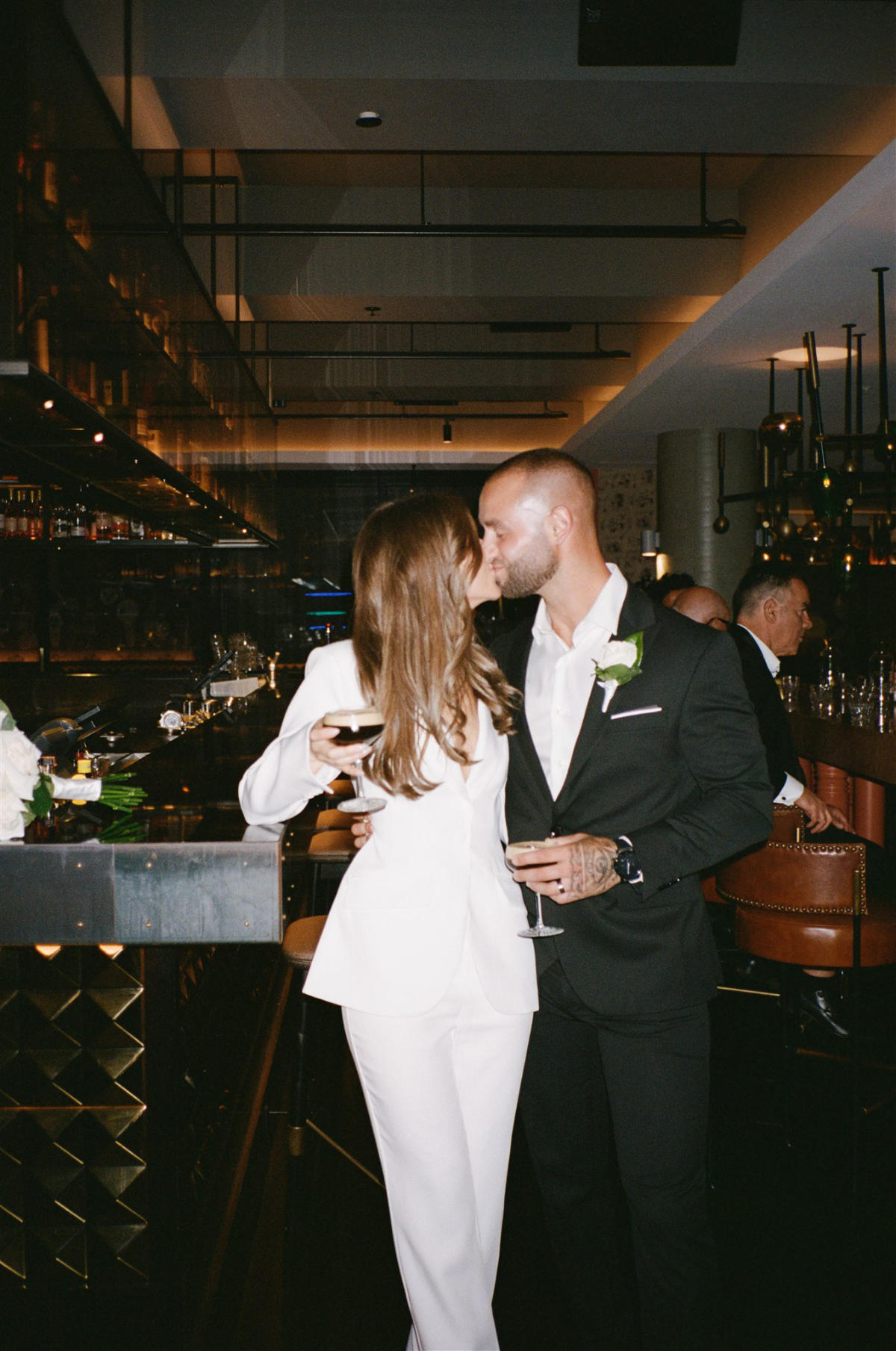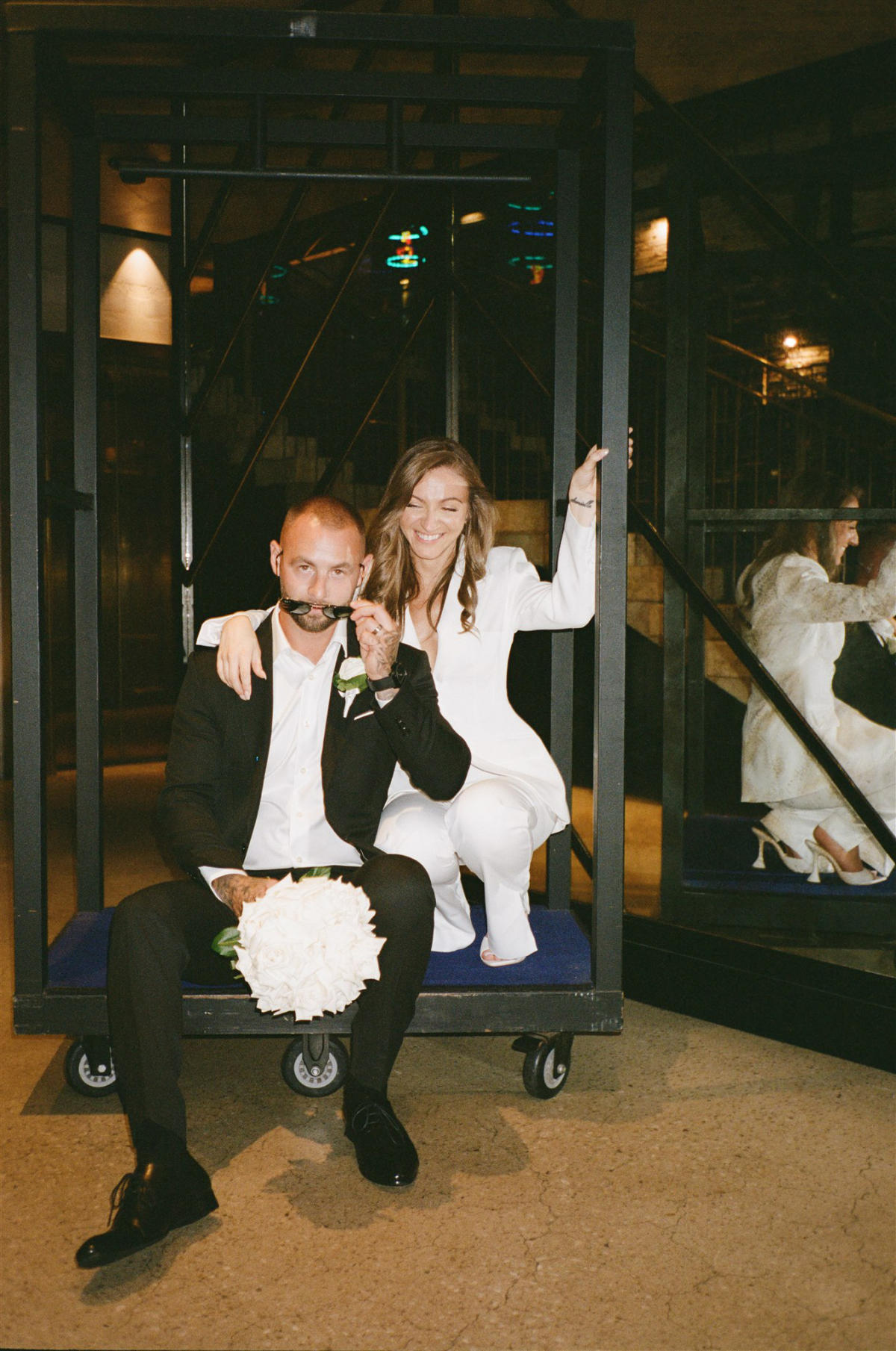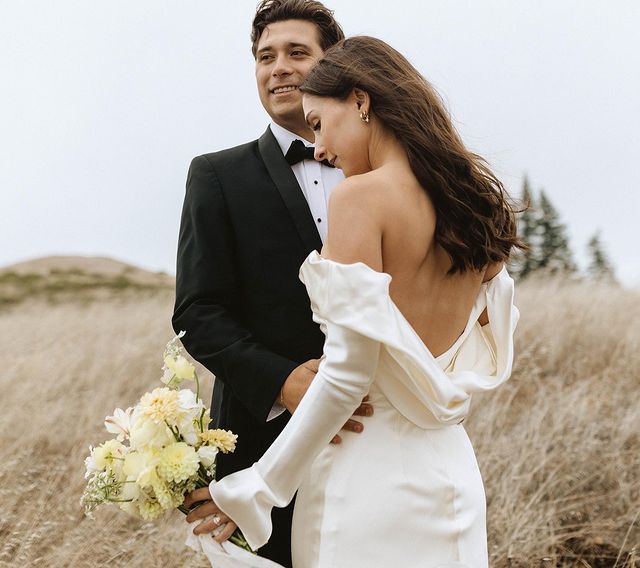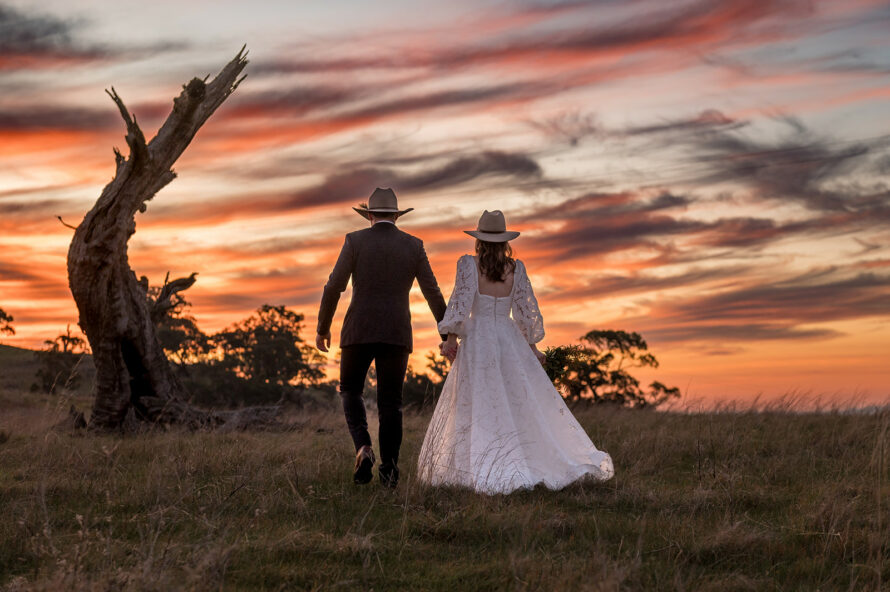Flash film wedding photography is having its moment

Ah TikTok, it’s given us some of our favourite wedding trends of recent years. Now, we can add a renaissance of flash film wedding photography to the list.
This fun photography trend is all the rage at the moment. We completely understand why: it’s cool, candid, and makes for eye-catching pictures you’ll be proud to display. With its bright, vibrant look and spontaneous feel, flash film photography captures the energy and excitement of the big day in a way that’s both modern and timeless. It’s perfect for couples looking to add a touch of vintage charm and fun to their wedding album.
So, what actually is flash wedding photography?
Flash film wedding photography combines flash lighting with the classic charm of film, creating bright, high-contrast images that stand out. Here are some key aspects of flash film wedding photography:
- Unique aesthetic. Flash film photography produces images with a natural grain and texture that digital photography often lacks. The combination of film and flash lighting results in a timeless, nostalgic feel.
- Controlled lighting. Using flash allows photographers to manage lighting conditions precisely, ensuring subjects are well-lit even in dim environments. This control is essential for indoor ceremonies or evening receptions where natural light is limited.
- Capturing moments. Flash captures moments as they happen, freezing emotions and movements in time. With film, these moments are preserved with an authenticity and warmth that digital images sometimes lack.
- Artistic imperfections. One of the charms of film photography is its imperfections. Light flares, grain, and slight exposure variations add character and artistry to the images, making each photo unique.
Flash photography vs natural light
Flash film photography and natural light photography each have unique strengths. Flash film photography allows for control over lighting conditions, ensuring bright and vibrant images with a distinctive vintage feel, regardless of the setting or time of day. It’s especially useful indoors or in low-light situations, creating dramatic and high-contrast photos with a classic film aesthetic.
Natural light photography, on the other hand, relies on available sunlight, resulting in soft, warm, and organic images. This style works best for outdoor ceremonies and daytime events, capturing the natural ambiance and nuances of the environment. However, it can be challenging in poor weather or dimly lit venues.
Couples should consider their wedding setting and personal style when choosing between these two methods. Natural light offers a timeless and authentic look, while flash film photography adds a nostalgic and artistic edge to the wedding album.
How to incorporate flash photography into your wedding
Incorporating flash film photography throughout different moments of the wedding can enhance the overall story of the day. During the ceremony, a subtle flash can ensure clear, well-lit images, particularly in dim venues like churches. Photographers should aim to bounce the flash to avoid distracting the couple and guests.
For the reception, flash film photography is perfect for capturing the lively atmosphere on the dance floor, freezing moments of joy and movement with clarity and the unique texture of the film. Portrait sessions benefit from controlled lighting too, where off-camera flash can create stunning, dramatic portraits that highlight the couple’s emotions and attire.
Photographers can get creative with techniques like backlighting the couple for romantic silhouettes or using coloured gels to change the mood. By thoughtfully integrating flash film photography into various parts of the wedding, photographers can deliver a diverse and compelling collection of images that blend vintage charm with modern style, creating a truly memorable wedding album.
Common flash photography mistakes — and how to avoid them
Flash film photography can be tricky, but knowing common pitfalls and how to avoid them can make all the difference. One frequent issue is overexposure, where the flash is too strong and washes out the subjects. To fix this, photographers should carefully meter the light and use diffusers to soften the flash.
Another common problem is harsh shadows, typically resulting from direct flash. Using bounce techniques or diffusers can help create more natural, even lighting. Additionally, with film, there’s less room for error since you can’t review shots immediately. Therefore, checking your settings and doing test shots is crucial.
For couples, the key is to stay relaxed and natural; stiff poses can be exaggerated by the flash. Good communication between the photographer and the couple ensures everyone is on the same page and happy with the results. Since film requires careful handling, ensuring that film rolls are properly stored and not exposed to light prematurely is also important.





